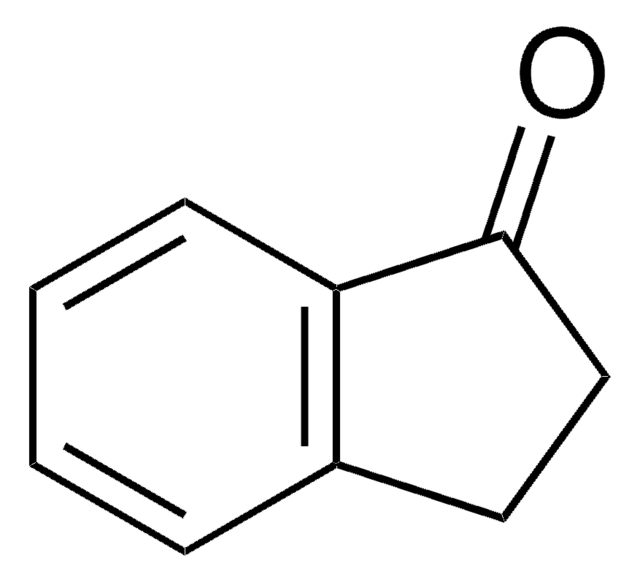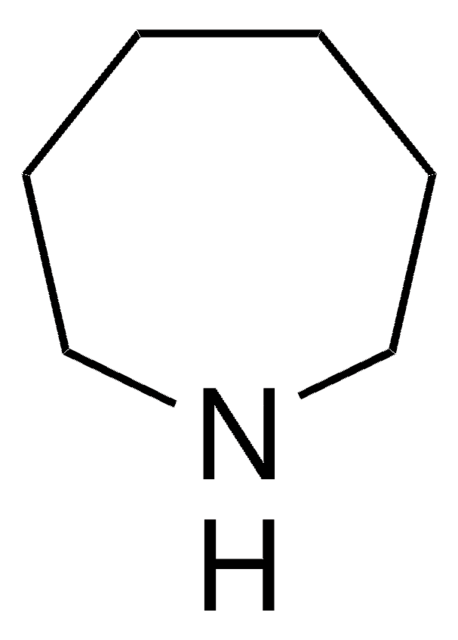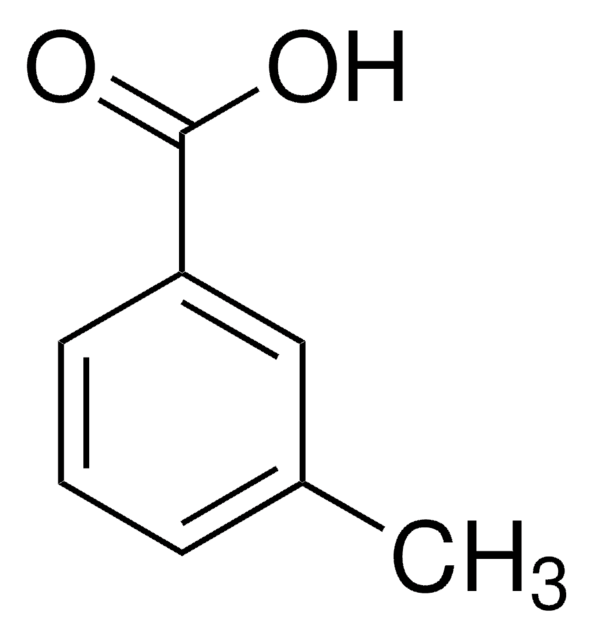394238
Pyrrolidine
≥99.5%, purified by redistillation
Sinónimos:
Tetrahydropyrrole, Tetramethyleneimine
About This Item
Productos recomendados
densidad de vapor
2.45 (vs air)
presión de vapor
128 mmHg ( 39 °C)
49 mmHg ( 20 °C)
Análisis
≥99.5%
formulario
liquid
temp. de autoignición
653 °F
purificado por
redistillation
lim. expl.
10.6 %
índice de refracción
n20/D 1.443 (lit.)
solubilidad
water: miscible
densidad
0.852 g/mL at 25 °C (lit.)
cadena SMILES
C1CCNC1
InChI
1S/C4H9N/c1-2-4-5-3-1/h5H,1-4H2
Clave InChI
RWRDLPDLKQPQOW-UHFFFAOYSA-N
¿Está buscando productos similares? Visita Guía de comparación de productos
Descripción general
Aplicación
- Synthesis of pyrrolidine derivatives of pyrimidine.
- As a catalyst in the selective monoallylation of allylic alcohols.
- To capture carbondioxide in a bubble column reactor using pyrrolidine aqueous solutions by gas–liquid absorption.
Palabra de señalización
Danger
Frases de peligro
Clasificaciones de peligro
Acute Tox. 4 Inhalation - Acute Tox. 4 Oral - Eye Dam. 1 - Flam. Liq. 2 - Skin Corr. 1A
Código de clase de almacenamiento
3 - Flammable liquids
Clase de riesgo para el agua (WGK)
WGK 1
Punto de inflamabilidad (°F)
37.4 °F - closed cup
Punto de inflamabilidad (°C)
3 °C - closed cup
Equipo de protección personal
Faceshields, Gloves, Goggles, type ABEK (EN14387) respirator filter
Elija entre una de las versiones más recientes:
¿Ya tiene este producto?
Encuentre la documentación para los productos que ha comprado recientemente en la Biblioteca de documentos.
Los clientes también vieron
Nuestro equipo de científicos tiene experiencia en todas las áreas de investigación: Ciencias de la vida, Ciencia de los materiales, Síntesis química, Cromatografía, Analítica y muchas otras.
Póngase en contacto con el Servicio técnico
















